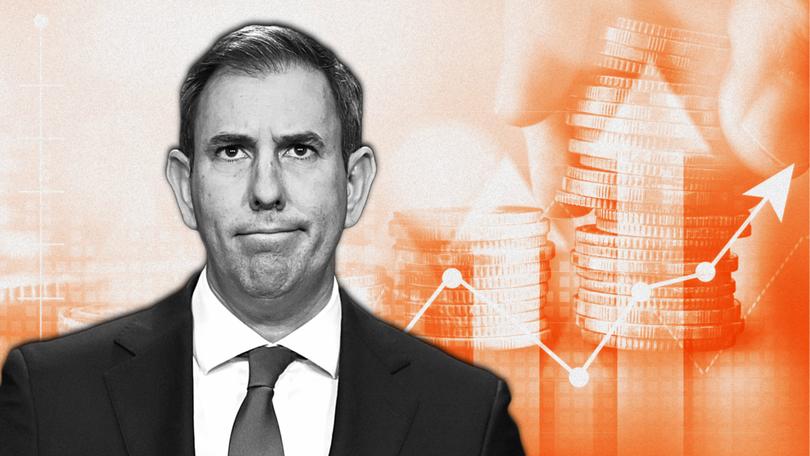Australian inflation fight is stalling under rampant government spending, International Monetary Fund says

The International Monetary Fund has warned Australia’s large public spending program is compounding a tight labour market with little spare capacity and as a result “stalling the disinflation process”, which may require higher interest rates.
After an annual review by visiting staff on December 2, the IMF concluded that;
“With significant uncertainty surrounding the macroeconomic outlook, the balance of risks is tilted to the downside. Domestically, persistent labour market tightness, stronger than expected fiscal impulses and lower spare capacity than currently assessed could contribute to stalling the disinflation process, potentially leading to higher-for-even-longer interest rates that adversely impact consumption and investment.”
Sign up to The Nightly's newsletters.
Get the first look at the digital newspaper, curated daily stories and breaking headlines delivered to your inbox.
By continuing you agree to our Terms and Privacy Policy.The warning comes as the IMF raises concerns about external factors, such as rising shipping costs and volatile energy and food prices amid escalating geopolitical tensions, which could add unforeseen inflationary pressures.
Economic growth is forecast to “remain below potential until 2026” but is expected to pick up gradually, increasing from 1.2 per cent in 2024 to 2.1 per cent in 2025, the IMF stated. Rising wages and tax cuts are anticipated to boost private consumption, while public spending is expected to remain strong.
It saw unemployment rising gradually to 4.5 per cent from the current 3.9 per cent and inflation returning to the Reserve Bank’s target range by the end of 2025, and into mid-2026.
That is inline with the RBA’s forecasts, which would open the door to interest rate cuts by the middle of next year. A downside risk, the IMF said, was weaker-than-expected growth or a faster-than-projected increase in unemployment that “may prompt the Reserve Bank to lower interest rates sooner.”
The IMF advised the Government to focus on disinflation on work closely with RBA to achieve that goal.
“A potential stall in disinflation poses a significant risk. In this context, the current restrictive monetary stance is appropriate, and needs to be supported by fiscal policy that avoids an expansionary stance and complements monetary policy’s disinflation objective,” the report concluded.
“Monetary policy should be prepared to tighten further if upside inflation risks materialise, and expenditure rationalisation at all levels of government could help reduce aggregate demand and support a quicker return of inflation to its target.”
The IMF’s suggestion that Australia should focus on inflation while also “nurturing growth” was the message highlighted by Treasurer Jim Chalmers.
“Our approach has been to maintain a primary focus on inflation and the cost of living without ignoring the risks to growth and the IMF supports this strategy.
“We’ve been planning and preparing for a soft landing, and with the economy still growing, inflation back in the band, real wages growing, jobs growth continuing and low unemployment the IMF says we are on track for one.” Dr Chalmers said.
Tax reform needed
The IMF reiterated previous advice that Australia needed to be reformist in its taxation policies given the growth in public spending commitments. An over-reliance on income taxes was a key concern of domestic economists following last week’s mid year budget update which showed a decade of budget deficits and government debt soaring past $1 trillion.
“In light of long-term spending pressures from ongoing demographic headwinds, coupled with climate change, expenditure reforms should aim at enhancing efficiency and containing structural spending growth at all levels of government,” the IMF concluded.
“Over the medium term, broader tax and expenditure policy reforms should reduce structural deficits, promote economic efficiency, and safeguard long-term fiscal sustainability.”
Australia revenue collection system is one of the most reliant on personal income taxes in the OECD, while offering generous tax concessions to the most well off. The mid-year economic and fiscal outlook showed there were $50 billion of tax concessions over the forward estimates for capital gains tax discounts that primarily benefited the richest in the country and superannuation tax concessions that primarily benefited those in the top income tiers.
“Tax reforms should focus on efficiency and fairness, reducing dependence on direct taxes and high capital costs, and phasing out tax breaks like capital gains tax discounts,“ the IMF said.
The report also concluded that Australia’s tight housing market was contributing to high levels of indebtedness, and was a long-term structural issue that needed to be addressed.
“The authorities are encouraged to proactively adapt their macroprudential tools to preempt excessive buildup in household indebtedness, including when the time is appropriate for monetary policy easing.
“A comprehensive policy package is essential to tackle Australia’s housing affordability crisis, focusing on increasing the construction workforce, relaxing zoning regulations, advancing initiatives to boost new housing supply, and reevaluating property taxes and stamp duty,” the IMF said.

